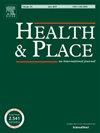绘制水路周围的户外酒类广告,探索广告的位置和内容
IF 4.1
2区 医学
Q1 PUBLIC, ENVIRONMENTAL & OCCUPATIONAL HEALTH
引用次数: 0
摘要
在西澳大利亚州(WA),社会活动发生在水生环境中,在那里酒精促销和消费可能普遍存在,造成水生酒精环境。这对预防溺水工作构成了挑战。限制在水生环境附近放置酒类广告,需要有证据证明在水生环境中酒类销售点的供应和促销有多普遍。我们的目标是量化西澳大城市户外酒类广告的存在和内容,并绘制酒类出口密度和许可场所的距离图。方法采用探索性、横断面、观察性研究方法,对西澳五个沿海地区的地理空间特征进行了调查。在ArcGIS中制作数字化导航地图。使用了一个改进的户外广告在线数据收集应用程序。结果在5个选区共发现520个广告。三分之二(66.2%,n = 344)的广告中含有酒精;其中,13.4% (n = 46)以水生位置为特征,最常见的是海滩(89.1%,n = 41)。在三个选区,广告出现在营业和非营业场所的窗户或建筑物墙壁上。其中一个区没有酒类广告,只有无执照经营场所(即餐馆)。这是第一个量化水生场所酒精广告数量和内容的研究。它提供了见解,为今后的宣传和政策努力提供信息,以解决水生环境内和周围的酒精广告和供应问题。结论:全面和强有力的酒类广告监管至关重要,有效地减少社区对水生场所酒类营销的接触,具体而言:(i)限制在水道附近投放酒类广告;(ii)限制以酒精和水上地点/活动为特色的广告。本文章由计算机程序翻译,如有差异,请以英文原文为准。
Mapping outdoor alcohol advertising around waterways in an exploration of where and what the advertisements feature
Background
In Western Australia (WA) social activities occur in aquatic environments where alcohol promotion and consumption may be prevalent creating an aquatic alcogenic environment. This poses a challenge for drowning prevention efforts. Restrictions on alcohol advertising placement near aquatic environments require an evidence-base of how prevalent alcohol outlet availability and promotion is in aquatic environments. We aimed to quantify the presence and content of outdoor alcohol advertising in metropolitan WA and map liquor outlet density and licensed venue proximity.
Methods
An exploratory, cross-sectional, observational study investigated the geospatial characteristics of five WA coastal precincts. Digitised navigation maps were produced in ArcGIS. A modified online data collection application for outdoor advertising was used.
Results
Across five precincts 520 advertisements were identified. Two-thirds (66.2 %, n = 344) included alcohol in the advertisements; of those, 13.4 % (n = 46) featured an aquatic location, most commonly the beach (89.1 %, n = 41). In three precincts, advertisements were on windows or building walls of on and off-licensed premises. One precinct featured no alcohol-based advertisements and on-licensed premises only (i.e., restaurants).
Discussion
This is the first study to quantify the volume and content of alcohol advertisements specific to aquatic locations. It provides insights to inform future advocacy and policy efforts to tackle alcohol advertising and availability in and around aquatic environments.
Conclusion
Comprehensive and robust alcohol advertising regulation that effectively minimises community exposure to alcohol marketing in aquatic locations is vital, specifically: (i) restricting advertising of alcohol near waterways; and (ii) restricting advertisements that feature alcohol and aquatic locations/activities.
求助全文
通过发布文献求助,成功后即可免费获取论文全文。
去求助
来源期刊

Health & Place
PUBLIC, ENVIRONMENTAL & OCCUPATIONAL HEALTH-
CiteScore
7.70
自引率
6.20%
发文量
176
审稿时长
29 days
期刊介绍:
he journal is an interdisciplinary journal dedicated to the study of all aspects of health and health care in which place or location matters.
 求助内容:
求助内容: 应助结果提醒方式:
应助结果提醒方式:


